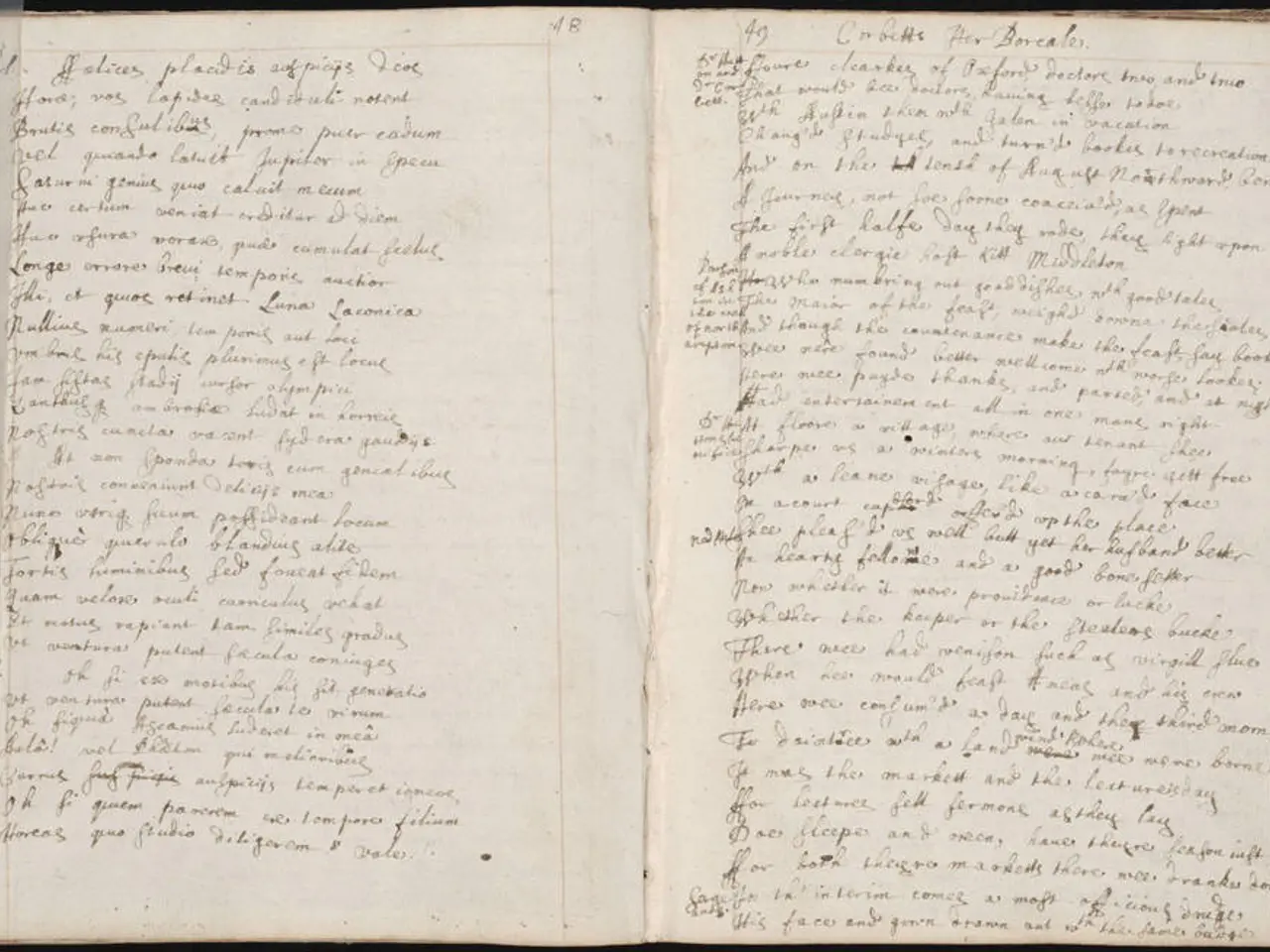Examining the Procedures Involved in Academic Journal Publication
Publishing a research paper in a peer-reviewed academic journal is an exciting yet challenging process, especially for first-time authors. Here's a comprehensive guide on how to navigate this journey, as demonstrated by Bridget Denzer, Engineering Correspondent, who co-authored and published two materials science review papers last summer.
Choosing the Right Journal
Selecting an appropriate journal is crucial. Consider factors such as scientific rigor, editorial quality, and audience fit by reviewing recent articles for quality standards. Check if the journal is indexed in major citation databases like MEDLINE, Web of Science, or Scopus, as this reflects its quality and visibility in your field. Also, consider the journal’s publisher reputation and membership in ethical bodies such as COPE or ICMJE.
Impact metrics, like Journal Impact Factor and SCImago ranks, can help gauge prestige and relevance, especially if your goal includes broad visibility and citations. However, when choosing a journal, it's essential to consider its open access or subscription status and the journal’s scope.
Preparing and Submitting the Manuscript
Formatting requirements must be followed exactly as specified in the journal’s author guidelines. These cover manuscript structure, reference style, figure formats, word limits, and supplementary materials. Many journals provide tools or checklists for pre-submission technical review to avoid desk rejection.
Peer Review and Revisions
The peer review stage involves expert reviewers evaluating scientific validity, originality, and clarity. Based on feedback, the editors may request revisions ranging from minor to major edits, or reject the manuscript. Authors respond by revising the manuscript and providing a detailed response to reviewers’ comments.
Finalization
Once revisions satisfy the reviewers and editors, the paper is accepted. After the publishing agreement is signed, the manuscript typically is published first as an “Accepted Manuscript” online, followed by final copyediting, proofing, and publication of the Version of Record.
Key Stages and Considerations
- Journal selection: Determine fit, quality, indexing, impact, and publisher credibility.
- Formatting: Follow journal-specific manuscript preparation guidelines strictly.
- Peer review: Engage constructively with reviewer feedback and revise accordingly.
- Finalization: Acceptance, copyright agreement, online early publication, then formal issue publication.
Tips for First-Time Authors
- Research advisers can offer suggestions for journals based on their own experience and the paper's fit with the journal’s impact factor, publishing costs, and scope.
- It's recommended to use a citation platform like Zotero for managing and formatting citations.
- When submitting a paper, you can typically only submit to one journal at a time.
- Open access journals usually require authors to pay for submission, while subscription-based journals do not.
- Impact factors can range from around 1 to over 10, with a higher number representing a more influential journal.
- If not accepted, authors may submit to their next choices.
The author, Bridget Denzer, expresses gratitude for the publishing experience as an undergraduate student, as it will help prepare them for research in graduate school and their career. Both of her papers were published in the journals Gels and the International Journal of Molecular Sciences, which are part of the Multidisciplinary Digital Publishing Institute (MDPI).
The author experienced a smooth revision process for one paper, but a longer review process for another due to major revisions. Journals provide a timeframe for revising the paper based on reviewer feedback and resubmitting.
In summary, ensuring careful journal selection aligned with your research topic and audience, meticulous adherence to formatting rules, and responsiveness to peer review feedback are essential to successfully publishing in a peer-reviewed academic journal.
Engaging in online education and self-development can help first-time authors improve their chances of publishing a research paper. For instance, taking courses on academic writing or journal selection can provide valuable insights and skills. (education-and-self-development, online-education, learning)
To increase the visibility of their research, authors may consider publishing their papers in open access journals, which are more accessible to a wider audience. (education-and-self-development, online-education, learning, online-education)




